

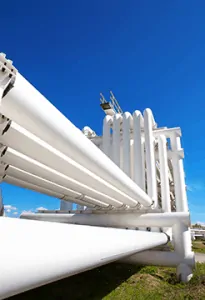
Long story short, an escapee from San Quentin and any uncontrolled methane air molecule may be more similar than we may presume. In fact, a common LDAR practice is to use an infrared imaging camera; similar to the camera often used in search of fugitive criminals.
On a serious note, fugitive emissions are something that both industry and regulators have been focused on for decades, and the past and present efforts made to limit them are no less than remarkable.
Specific to Onshore Oil and Gas Exploration & Production, the Federal Regulations applicable to fugitive emissions are fairly young. Finalized in 2012, NSPS OOOO is no longer a toddler and is in the middle of growing into NSPS OOOOa (Public Comment Deadline March 11, 2016). On a national scale, NSPS OOOOa will expand fugitive emission monitoring and control requirements (VOC’s and methane) to several facility types associated with the industry and is expected to be finalized before the close of 2016.
In California, fugitive emissions from Onshore Oil and Gas Exploration & Production have been regulated for a long time. In fact, the O&G industry in Santa Barbara County has dealt with fugitive emission requirements since 1979. Since then SCS Engineers has been assisting with fugitive emission monitoring for our valued clients. Today, SCS Engineers provides the Oil and Gas Exploration and Production industry with efficient and effective LDAR services.
So fear not, SCS Engineers is ready to supply the knowledge and skill set you need to stay compliant, maintain your operations, and respect your bottom line. Remember, unless the doors are closed, pumps are turned off, and equipment is flushed and plugged; fugitive emissions requirements and LDAR will likely still apply.
Applicability: Determining Federal vs. State oversight is the first step. Non-Major Source Oil and Gas Production facilities are either subject to NSPS OOOO (soon to be OOOOa) or a related State specific rule (i.e. Colorado Regulation 7). Once oversight is determined, then there may still be exemptions for your facility (i.e. facility constructed before August 23, 2011). And finally, once regulatory oversight is confirmed and you determine that LDAR is required for your facility, then the last step is to figure out which equipment is applicable (i.e. VOC content > 10% by weight). Basically, an applicability determination can be daunting.
Equipment: EPA’s Method 21 is historically and currently referenced in all LDAR regulations. Method 21 requires an instrument such as the Flame Ionization Detector (FID) or Photo Ionization Detector (PID). More recently the Optical Gas Imaging (OGI) Camera has been included in LDAR regulations and utilized in LDAR programs. Presently, there are several instrument technologies that exist and are in the works, but not yet mainstream in Oil and Gas sector. Ultimately, if you were to find yourself conducting LDAR monitoring at your oil and gas facility tomorrow per an established regulation, you would most likely need to use an FID or OGI.
Recordkeeping: Personally, I like the simplicity of using paper forms for field notes; however, the old-fashioned way comes with risk. The up-front and ongoing data involved with an LDAR program is too much for maintaining a paper to computer process, regardless of how organized you think you are. Therefore, a computer database platform is recommended and necessary for managing your LDAR recordkeeping. Beyond just recordkeeping, a database platform can organize schedules, alerts, generate reports, extract trends, and many other applications to help keep your LDAR program compliant. One such platform worth considering is SCSeTools™. This cloud-based software can provide the database capabilities used on the desktop, but almost more importantly, provides mobile data input capabilities with the SCS MobileTools™ application fit for Android and IOS systems. Keep the fugitives from escaping, and document containment for the authorities!
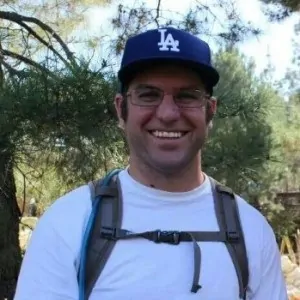
Whether you want to discuss LDAR or Dodger baseball, don’t hesitate to contact me, or SCS Engineers.
Resources:
Learn more on the SCS service pages and read SCS project case studies from across the nation to help fine tune your program.
Outside links to the EPA proposed rulemaking website:
Thirty-four senators and 171 representatives argue in a brief filed February 23, that the EPA overstepped its boundaries in creating the carbon-cutting Clean Power Plan. In short, the brief states that they feel that Congress never gave the EPA a clear statutory directive or authority to transform the nation’s electricity sector. The brief points out that the EPA seeks to make “decisions of vast economic and political significance” under a “long-extant statute,” and in doing so must point to a “clear statement from Congress.”
Yesterday’s brief comes just two weeks after the U.S. Supreme Court ruled the EPA cannot begin enforcing the rule until legal challenges filed by 25 states and four state agencies are resolved.
The D.C. Circuit Court of Appeals will hear oral arguments on the merits of the states’ case on June 2.
With the brief it is clear that the Clean Power Plan is not only facing legal challenges but also political ones. It may be left for the next Administration to pick up this pieces and decide the fate of the Plan.
The National Waste & Recycling Association (NWRA) and the Solid Waste Association of North America (SWANA) returned comments and recommendations on the Environmental Protection Agency’s (EPA) draft Part 71 Operating Permit for Ocean County Landfill and MRPC Holdings LFGTE Operations, Permit Number: P71-0CMH-001 (Draft Permit) to EPA Region 2 Permitting Section, Air Programs Branch. The letter was sent on January 28, 2016, to Mr. Steven C. Riva of the EPA.
NWRA and SWANA expressed concerned that the EPA’s issuance of the Draft Permit, and the circumstances under which it has been prepared, represent a significant departure from practical permitting policies and will constitute a disincentive to expand existing and develop future landfill gas-to-energy (LFGTE) projects around the country.
The jointly submitted comments from both not-for-profit Associations on the Draft Permit were intended to convey their members’ strong interest in these projects, which represent an economic investment in alternative renewable energy sources and the reduction in greenhouse gas (GHG) emissions. Both Groups have expressed concern that the EPA’s actions should not undermine those investments and the benefits derived from these LFGTE projects.
The main points of the letter cover the Associations’ disagreement with the EPA’s approach to common control. NWRA and SWANA support the position that the OCL and MRPC are two separate sources that are not under common control, and they oppose the position proposed by EPA Region 2 in the Draft Permit. Both Groups are urging EPA to re-evaluate this decision and utilize an environmentally beneficial approach when making common control determinations for landfills and third-party LFGTE plants both now and in the future. Other portions of the letter address the uncertainty that EPA’s position would create for affected facilities and how it could re-open already settled compliance expectations.
Members of NWRA and SWANA have access to the letter and may continue directing comments and questions through either Association.
Questions directed to SCS Engineers should be addressed to Pat Sullivan, Senior Vice President and the SCS National Expert on the Clean Air Act.
Learn more about SCS Clean Air Act Services, or Greenhouse Gas Services, or
Landfill Gas to Energy Services
SCS Engineers along with Waste Management, Republic Services, Advanced Disposal, National Waste & Recycling Association, Solid Waste Association of North America, The Sanitation Districts of the County of Los Angeles, and other consultants have submitted additional comments to the U.S. Environmental Protection Agency (USEPA), Fuels & Incineration Group, Sector Policies and Programs Division regarding the Supplemental Proposal for the New Standards of Performance (NSPS) for Municipal Solid Waste (MSW) Landfills and the Proposed Emission Guidelines (EG).
The USEPA solicits comments from industry, state officials and other organizations to clarify key points in proposed policy prior to enacting the policy. Although the Agency is not required to consider additional comments after the closing period for such comments, these solid waste industry participants wanted to provide additional findings supporting portions of the policies and guidelines and asking for clarification in areas where there appears to be inconsistency with other federal rules or a lack of data.
The eighteen-page letter was submitted on January 22, 2016, to Ms. Hillary Ward. Since last Friday inclement weather has forced a closing of Federal Agencies in the Washington, D.C. region.
Click for SCS Engineers compliance information.
Click to contact Pat Sullivan, SCS National Expert on EPA Landfill Clean Air Act; NSPS/EG
SCS Engineers and their clients appreciate the support. The National Waste & Recycling Association (NWRA) and the Solid Waste Association of North America (SWANA) sent the Environmental Protection Agency (EPA) supportive comments on the proposed revisions to the Research, Development and Demonstration (RD&D) Permits Rule for Municipal Solid Waste Landfills (80 FR70180, November 13, 2015).
EPA’s proposed extension to the RD&D Rule would afford landfill owners the opportunity to continue to operate and develop new data and information that would influence future decision-making by regulators and industry alike. The time extension will provide additional time to help landfill owners evaluate and realize the financial value of the RD&D projects, thus increasing landfill owners’ confidence in implementing related large scale projects. These investments would be for the design, construction, additional monitoring and data collection and reporting that accompany long-term research projects, such as those associated with bioreactor landfills.
The RD&D rule provides the ability to obtain data on best practices to address both the advantages and challenges associated with bioreactor landfills. Operating these types of landfills have many advantages, they are not without their challenges. A bioreactor landfill is much more complex than a typical landfill.
NWRA, SWANA, and SCS Engineers believe this proposed rule will promote new research demonstration projects and support the continued research at existing projects so that EPA will have the information necessary to consider changes to the MSW landfill operating criteria.
Technical bulletins provide salient information in a condensed format. These summaries are useful to understand and start to plan for potential impacts to your business. Both bulletins posted today include deadlines and additional resources with contact information to help answer your questions. The two bulletins posted today are as follows:
Clicking the title of each Technical Bulletin will take you to the full text. Each Bulletin may be shared, emailed, or printed.
About Pat Sullivan:
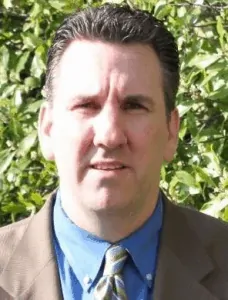
Pat Sullivan, BCES, CPP, REPA, is a Senior Vice President of SCS Engineers and our National Expert on the Landfill Clean Air Act and the New Source Performance Standard (NSPS). Mr. Sullivan has over 25 years of environmental engineering experience, specializing in solid and hazardous waste-related issues.
Click on Pat’s name to see his full qualifications and experience.
The U.S. Environmental Protection Agency (EPA) issued a final rule on September 29, 2015, seeking to further control emissions of hazardous air pollutants (HAPs) and volatile organic compounds (VOCs) from petroleum refineries.
This action finalizes the residual risk and technology review conducted for the petroleum refinery source category regulated under the National Emission Standards for Hazardous Air Pollutants (NESHAP; 40 CFR Part 63, Subpart UUU), including the refinery Maximum Achievable Control Technology Standard (MACT) 1 and Refinery MACT 2.
Click here to read the Technical Bulletin
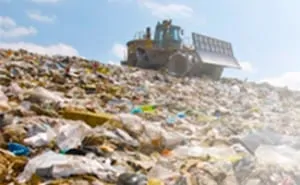
SCS Engineers has also submitted comments pertaining to the proposed EG and compliance revisions to the EPA. SCS leaders are involved in many outreach activities to help landfill owners and operators understand and prepare for the impact of the proposed modifications.
Contact SCS Engineers at for more information, or visit the SCS website for upcoming events and pertinent resources.
Reprint
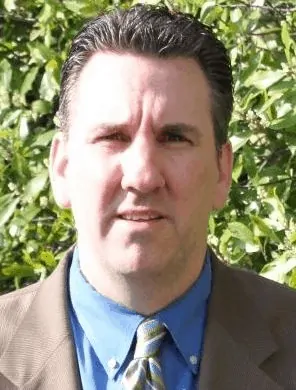
The SWANA Landfill Gas and Biogas Division is very busy right now with several important efforts. On the Rules and Regulations front, the U.S. EPA has promulgated two draft landfill gas (LFG) rules that were published in the Federal Register on August 27, 2015. These include a draft Emission Guideline (EG) rule and a supplemental draft New Source Performance Standards (NSPS) rule.
The proposed EG rule affects “existing” landfill sites (i.e., landfills that have not been expanded and were not newly constructed after July 17, 2014). The NSPS rule is a supplemental proposal that affects “new” landfill sites (landfills that are new or were expanded in capacity after July 17, 2014). Comments on both are due by October 26, 2015. Final issuance of both rules is expected in the first quarter of 2016. The Division Rules and Regulation and Advocacy committees are working together to develop SWANA’s industry comments on the rules.
The major focus of both rules is the current 50 Mg/year of non-methane organic compounds (NMOCs) emission threshold, which triggers the installation of a LFG collection and control system (GCCS). In the proposed rules, that threshold will be lowered to 34 Mg/year for all landfills except existing, closed sites. This appears to be the centerpiece of the U.S. EPA’s plan to create additional NMOC and methane reductions from landfills. With a lowered NMOC threshold, some landfills, particularly those that have been too small to trigger the installation of a GCCS, will be required to install them.
Other key components of the draft EG rule, which are likely to be similar in the NSPS rule, include the following:
The draft EG rule also provides clarifications on several existing rule topics, as well as topics where U.S. EPA decided not to include such items in the rule:
During the comment period, the EPA also is looking for public comment on:
The EPA will have the ability to add more provisions to the final version of the rule based on the information submitted as a part of these information requests. This means the industry must make a strong case to the EPA to get them to consider our opinions on these issues.
Comments on this article should be addressed to Patrick S. Sullivan, Senior Vice President, SCS Engineers, at 916-361-1297 or

If you missed this presentation, NWRA has granted SCS permission to post the slide show on our website. We welcome everyone to view the slide show and thank the NWRA for sponsoring the webinar. Webinar presenters include:
For more information and answers to your questions please contact Pat Sullivan, SCS Engineers or the webinar presenters.
Click for information about NSPS/NESHAP Compliance Services.